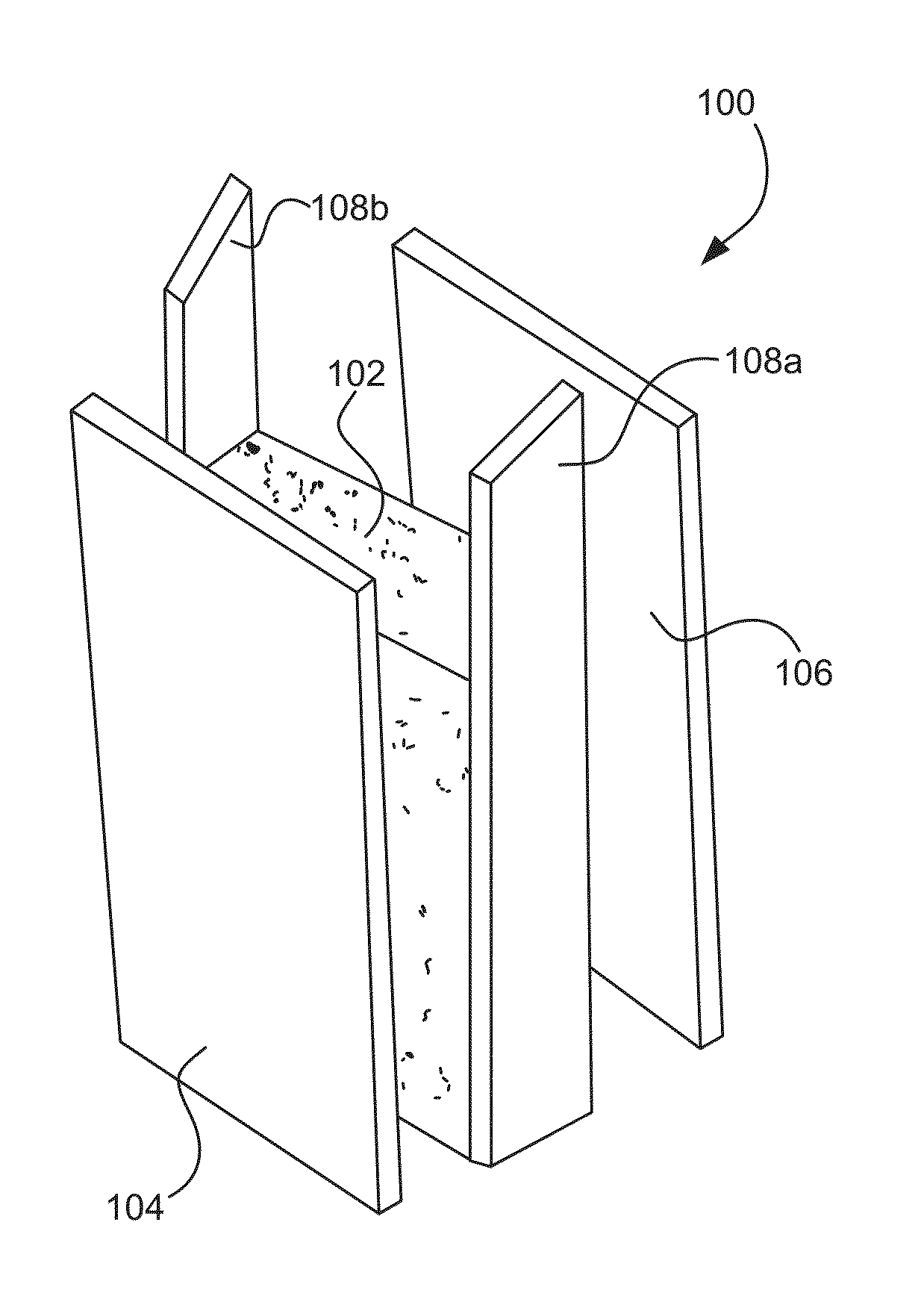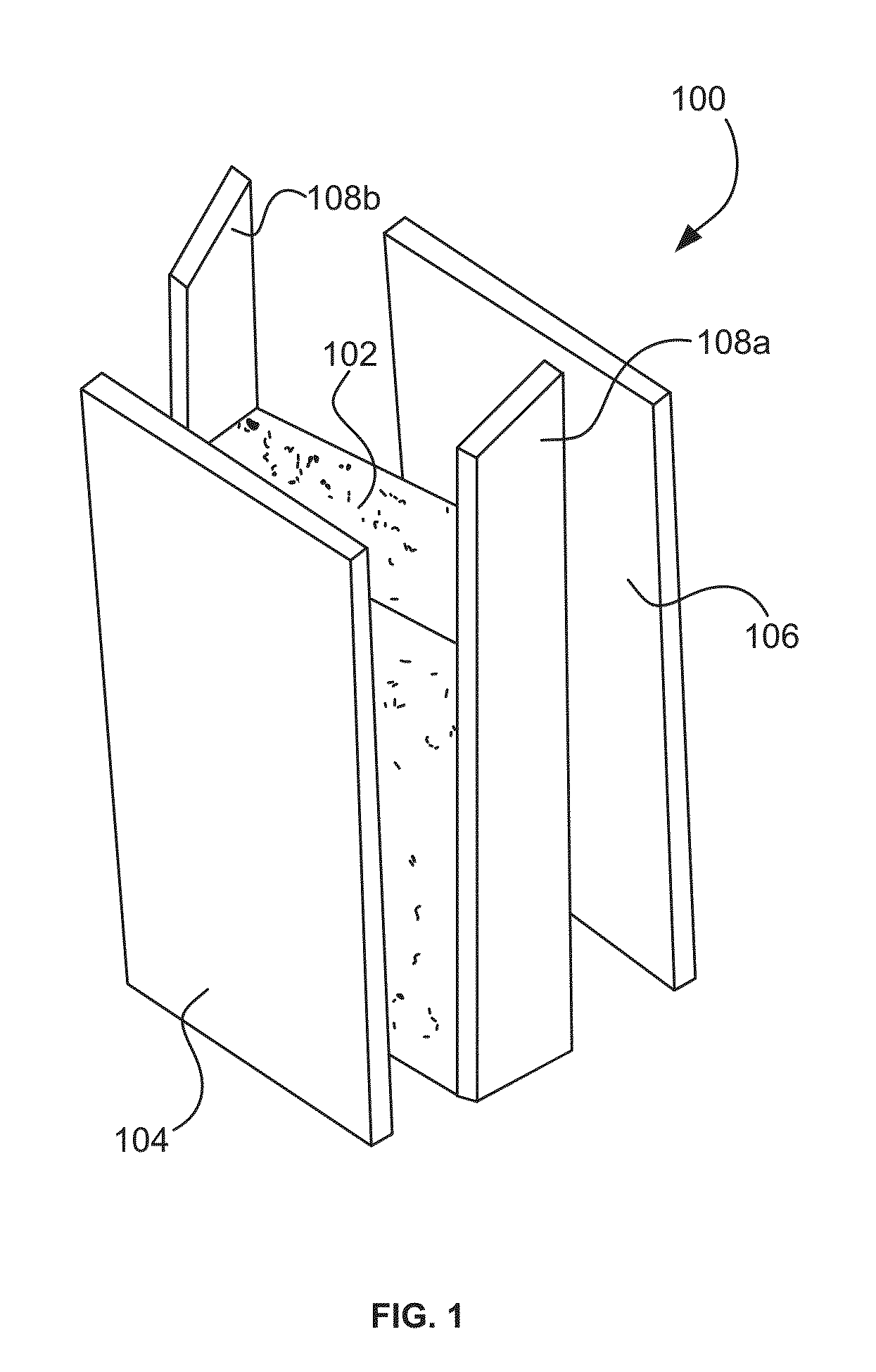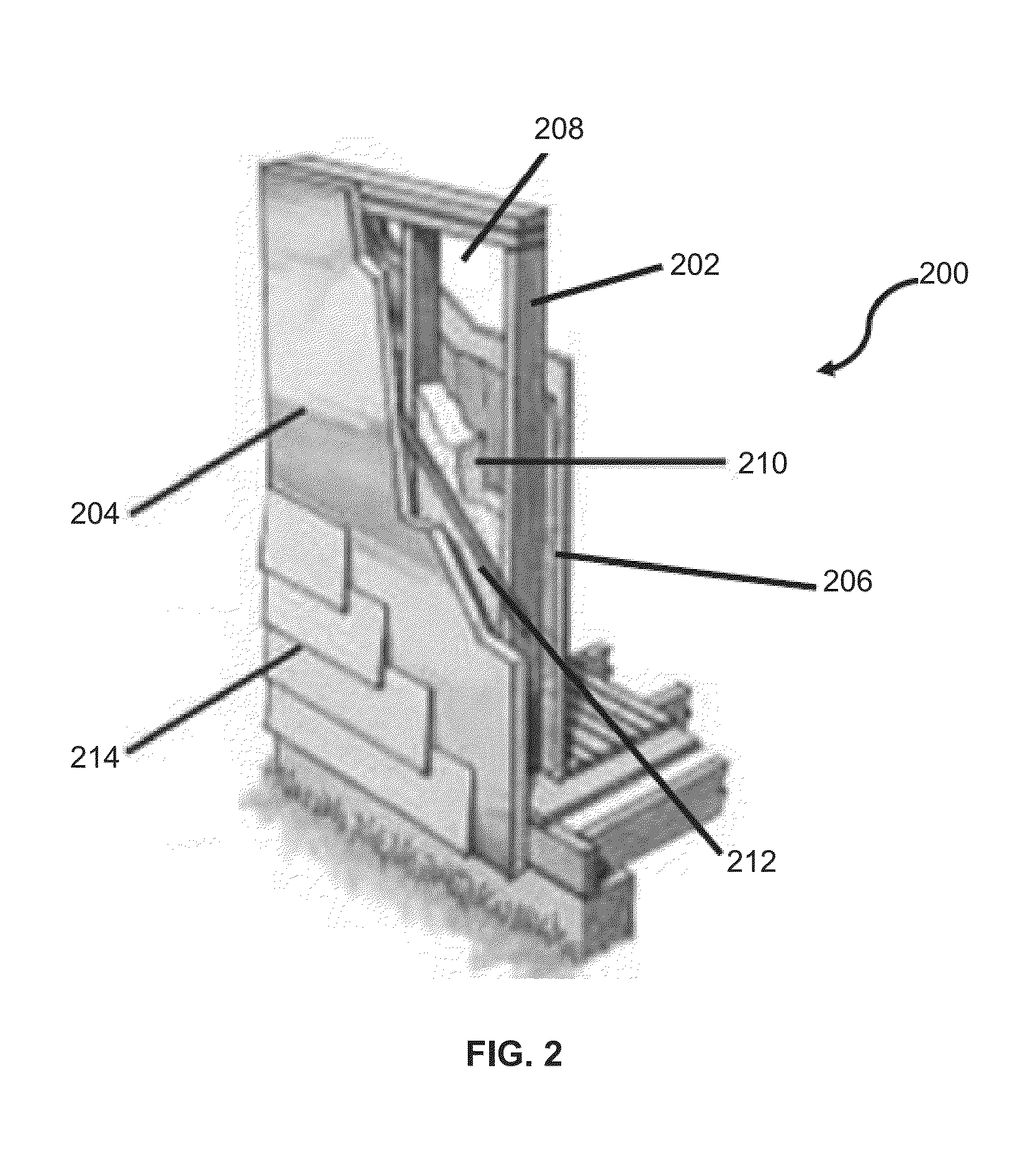Open cell spray fire-retardant foam
a fire-retardant foam and open-cell technology, applied in heat-retardant, building components, construction, etc., can solve the problem that water may not wash away an otherwise water-soluble saccharid
- Summary
- Abstract
- Description
- Claims
- Application Information
AI Technical Summary
Benefits of technology
Problems solved by technology
Method used
Image
Examples
Embodiment Construction
[0011]Many prior spray foams include polyurethane and are known as spray polyurethane foams (SPFs). A typical prior formulation for making SPF may include (i) a polyisocyanate reactant and (ii) a polyol reactant. The SPFs are made by combining separate liquid mixtures that include the polyisocyanates (the A-side mixture) and the polyols (the B-side mixture) and then immediately spraying the combined mixtures through a spray machine directly into a building envelope to be thermally insulated, such as a wall and joist cavity. The spray machine may include a first transfer pump for carrying the A component and a second transfer pump for carrying the B component. The A and B components may be transferred at a prescribed volume ratio (often 1:1) through a heated dual hose into a spray gun, where the components mix together to form the SPF product that is released for administration at the building envelope. In some practices, the SPF product may be stored in and administered from a small...
PUM
| Property | Measurement | Unit |
|---|---|---|
| density | aaaaa | aaaaa |
| density | aaaaa | aaaaa |
| weight percent | aaaaa | aaaaa |
Abstract
Description
Claims
Application Information
 Login to View More
Login to View More - R&D
- Intellectual Property
- Life Sciences
- Materials
- Tech Scout
- Unparalleled Data Quality
- Higher Quality Content
- 60% Fewer Hallucinations
Browse by: Latest US Patents, China's latest patents, Technical Efficacy Thesaurus, Application Domain, Technology Topic, Popular Technical Reports.
© 2025 PatSnap. All rights reserved.Legal|Privacy policy|Modern Slavery Act Transparency Statement|Sitemap|About US| Contact US: help@patsnap.com



